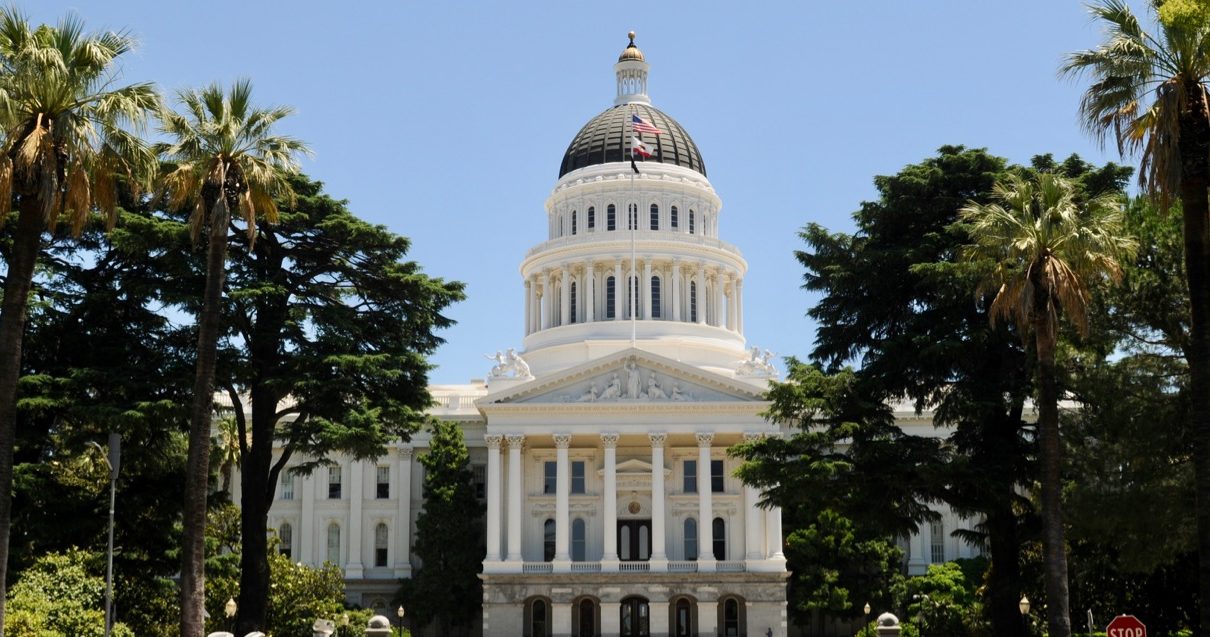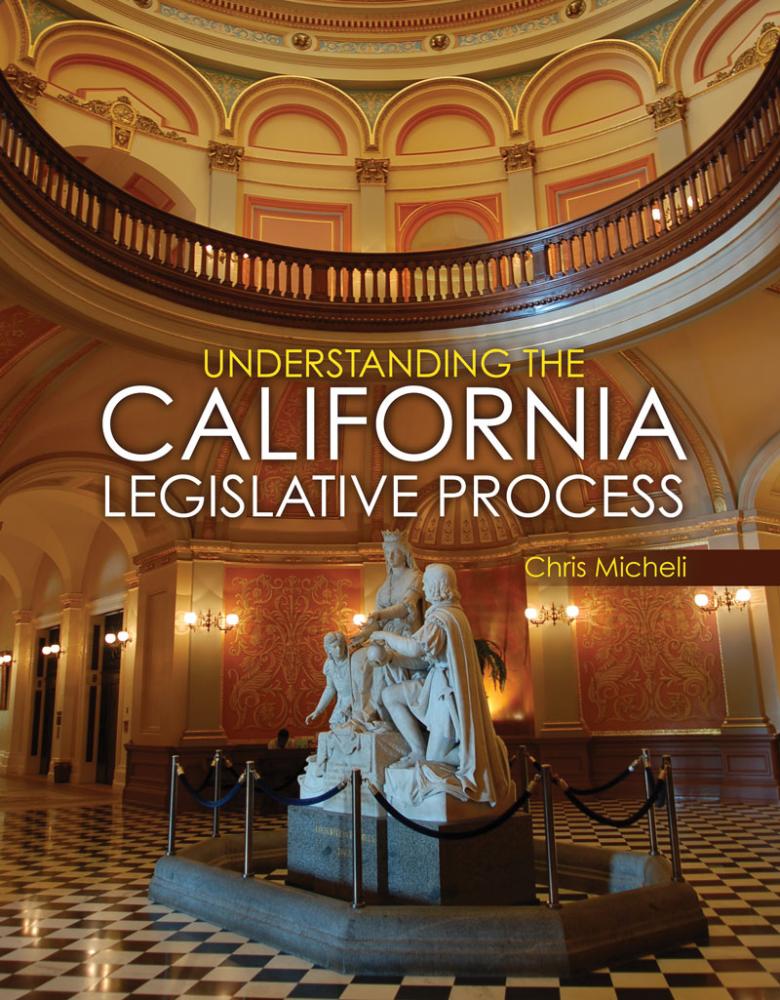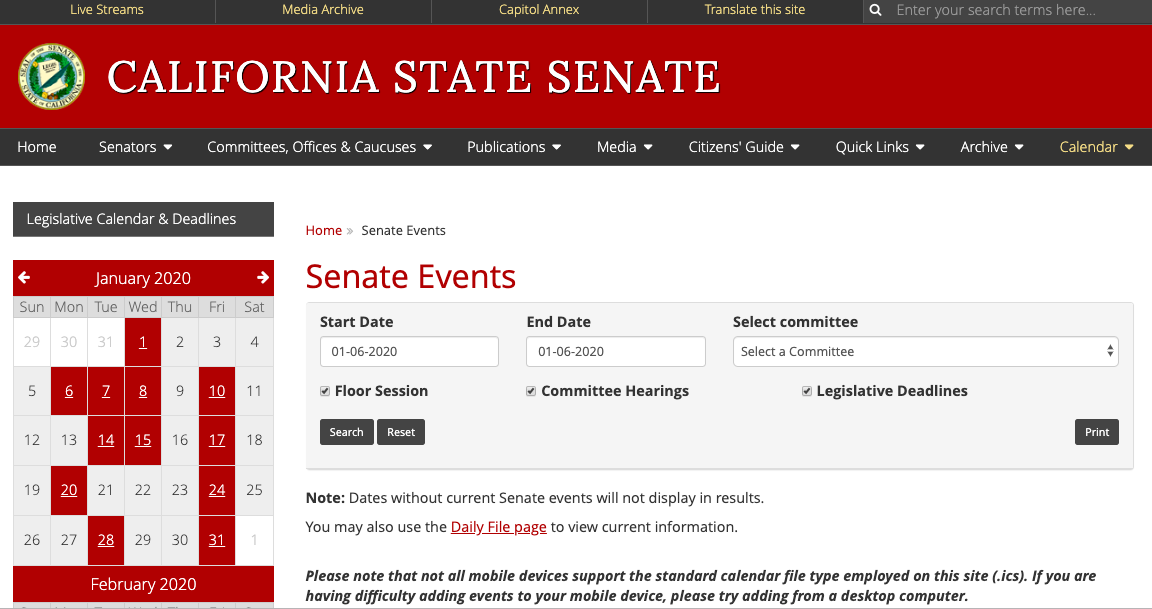
California State Capitol. (Photo: Kevin Sanders for California Globe)
Different Vote Requirements for California Legislative Actions and Bills
There are actually several categories of vote requirements on bills that come before the Legislature
By Chris Micheli, November 6, 2019 7:26 am
Most Capitol observers are only aware of majority vote and 2/3 majority vote requirements for California legislation. However, there are actually several other categories of vote requirements on bills that come before the Legislature. The following are those categories and the bills or actions that come before the Assembly and Senate:
Majority Vote – A vote of more than half of the legislative body, which is 41 votes in the Assembly and 21 votes in the Senate. This is the basic vote threshold for the vast majority of bills. The following actions require 21 votes (Senate) or 41 votes (Assembly):
- To adopt, amend, or suspend the rules, except as otherwise provided.
- To pass a bill, unless under other rules a greater vote is required (Constitution, Art. IV, Sec. 8(b)).
- To adopt a joint or concurrent resolution.
- To reconsider a bill, or a joint or concurrent resolution.
- To confirm an appointment by the Governor, unless a greater vote is required by statute, or to reconsider the same.
- To recall a bill from committee.
- To concur in the other house’s amendments to, or adopt a report of a committee on conference concerning, a joint or concurrent resolution or bill that requires a majority vote for passage.
- To change a rate of bank and corporation taxation, or tax on insurers, for state purposes (Constitution, Art. XIII, Secs. 27, 28).
- To strike a measure from the file.
- To adopt a resolution that does not favor a Governor’s Reorganization Plan (Sec. 12080.5 of the Gov’t Code).
Two-Thirds Vote – Bills containing an urgency clause, tax increase, amendments to the Political Reform Act, and constitutional amendments are the major measures that require a 2/3 majority vote of each legislative body, which is 54 votes in the Assembly and 27 votes in the Senate. The following is a list of measures requiring a 2/3 majority vote:
- To pass an urgency clause and urgency statute (Constitution, Art. IV, Sec. 8(d)).
- To dispense with the constitutional provision requiring the reading of bills on three separate days (Constitution, Art. IV, Sec. 8(b)).
- To pass a bill over the Governor’s veto (Constitution, Art. IV, Sec. 10).
- To prescribe compensation and reimbursement for travel and living expenses of the Members of the Legislature (Constitution, Art. IV, Sec. 4).
- To propose an amendment to or revision of the Constitution (Constitution, Art. XVIII, Secs. 1, 2).
- To amend or withdraw a proposed legislative constitutional amendment or revision (Constitution, Art. XVIII, Sec. 1).
- To classify or exempt personal property for property taxation purposes (Constitution, Art. XIII, Sec. 2).
- To permit an exemption of real property from taxation (Constitution, Art. XIII, Sec. 7).
- To remove a member of the Public Utilities Commission (Constitution, Art. XII, Sec. 1).
- To reconsider the vote by which a concurrent resolution proposing a constitutional amendment is defeated.
- To rescind the action whereby a bill has been passed or defeated.
- To suspend the rule against lobbying in the Chamber.
- To concur in amendments to, or adopt a report of a committee on conference concerning, a constitutional amendment or bill that requires 27 votes for passage
- To concur in amendments to, or adopt a report of a committee on conference concerning, a bill that contains an item or items of appropriation subject to Section 12(d) of Article IV of the Constitution.
- To amend an initiative statute that permits that action and requires 27 votes or 54 votes for passage.
Three-Fourths Vote – The California Constitution requires that a bill may not be heard or acted upon until the 31st day after introduction (Constitution, Art. IV, Sec. 8(a)). To waive this requirement requires 30 votes in the Senate and 60 votes in the Assembly. This vote threshold also applies to a motion to postpone the reconsideration of a vote beyond the first legislative day succeeding the day the motion was made.
70% Vote – The following actions require 28 votes in the Senate or 56 votes in the Assembly:
- To pass a bill amending the statutory provisions, other than the bond provisions, of the California Stem Cell Research and Cures Act (Prop. 71).
- To pass a bill amending the statutory provisions of the Victims’ Bill of Rights Act (Sec. 9).
Four-Fifths Vote – The final category of bills require a 4/5 majority vote, which means 32 votes in the Senate and 64 votes in the Assembly. This highest vote threshold applies to the following measures:
- Bills to amend the Tobacco Tax and Health Restoration Act of 1988 (Prop. 99).
- Bills to amend the Clean Air and Transportation Improvement Act of 1990 (Prop. 116).
- Bills to amend the California Wildlife Protection Act of 1990 (Prop. 117).
So there are actually five categories of vote requirements, rather than just two as many believe to be the case. Of course, these higher vote threshold-required measures do not come up too often. Nonetheless, it is helpful to be aware that there are other vote requirements beyond the usual majority and 2/3 majority measures.
- California Department of Child Support Services - December 24, 2025
- Mistakes in Legal Pleadings - December 23, 2025
- The Division of Property Concerning Retirement Plan Benefits - December 23, 2025




